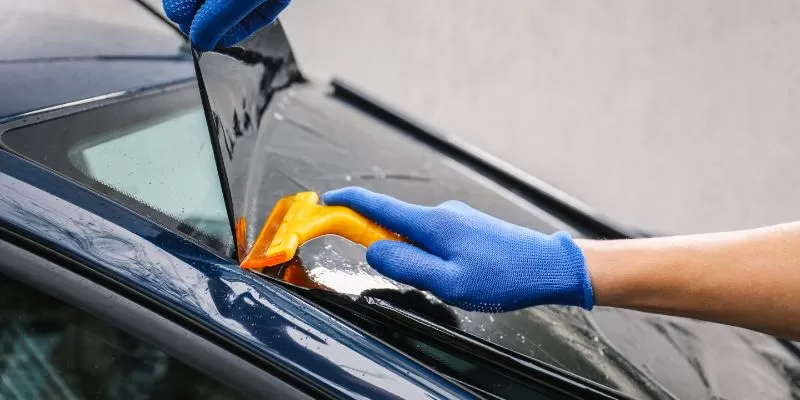Economical Vehicle Window Tinting for Every Automobile Kind
Wiki Article
Home Window Tinting Rules and Standards: What You Need to Know Before Tinting Your Car
Prior to waging window tinting for your lorry, it is necessary to acquaint yourself with the varied laws and standards that regulate this practice throughout different states. These policies dictate the permissible degrees of color darkness, usually measured by visible light transmission (VLT) percents, and consist of certain stipulations for front windscreens focused on ensuring roadway safety. Additionally, certain jurisdictions may supply clinical exceptions for individuals with certifying conditions. Recognizing these complexities can save you from possible lawful ramifications, yet what are the particular rules in your state?Introduction of Window Tinting Regulations
Window tinting legislations are regularly subject to variation throughout various territories, reflecting regional laws and safety considerations. These regulations determine the allowable degrees of color darkness and reflectiveness on car windows, guaranteeing that vehicle drivers keep appropriate visibility while additionally shielding versus dangerous UV rays and heat.Many policies identify home window tinting based upon the Visible Light Transmission (VLT) percentage, which shows the quantity of light that can go through the home window. Generally, lower VLT percentages represent darker tints. Legislations often separate between the front, side, and rear windows, with stricter constraints applied to the front windshield to boost safety and security for both the vehicle driver and other road users.
In addition, some territories impose limitations on the reflectivity of the color, preventing extreme glare that could hinder exposure. Exemptions to these regulations may exist for individuals with certain medical problems calling for extra sun defense. Conformity with home window tinting laws is important, as infractions can cause fines, mandatory removal of the tint, and possible boosts in insurance costs. It is crucial for lorry proprietors to acquaint themselves with regional laws before continuing with window tinting setups.
State-by-State Tint Laws
Comprehending the specific window tinting guidelines in each state is crucial for vehicle owners looking for to comply with the legislation. Each state in the united state has developed its very own set of regulations governing home window tinting, which can differ dramatically. These policies often dictate the allowable degrees of tint darkness, the kinds of windows that can be tinted, and any type of medical exceptions that might apply.As an example, states like California have rigid constraints on tint darkness for front windows, while others, such as New Mexico, might enable darker colors. In addition, specific states mandate details visibility portions for different windows, consisting of the windshield, front side home windows, and rear windows. It is essential for auto owners to familiarize themselves with their state's laws to avoid possible fines or charges.
In addition, some states might need a qualification sticker label to be positioned on colored windows, indicating compliance with state laws. Failure to follow these guidelines not only runs the risk of legal repercussions however can additionally influence safety and security and presence while driving. For that reason, car proprietors ought to conduct detailed research study or speak with neighborhood authorities to ensure full understanding and conformity with state-by-state tint policies.
Allowed Tint Levels and Types
Many vehicle proprietors might be amazed to learn that enabled color degrees and types differ extensively across various states. Each state has developed its very own policies regarding the acceptable darkness and reflectivity of home window tint, commonly gauged by Visible Light Transmission (VLT) percentages. VLT refers to the amount of light that can go through the colored windows; therefore, a reduced percent suggests a darker tint.
In addition, the sorts of color products enabled can vary, with some states forbiding mirror-like or metal finishes. It is important for lorry proprietors to acquaint themselves with their state's particular regulations to make sure conformity. Non-compliance can cause fines, obligatory removal of the tint, or other lawful repercussions, making it vital to recognize these policies before waging installment.
Medical Exemptions for Tinting
While not all states offer allowances for clinical exemptions concerning home window tinting, those that do recognize the need for particular individuals to enhance visibility and comfort as a result of medical problems. Numerous clinical problems, such as lupus, skin cancer, and specific eye disorders, can render individuals specifically conscious sunshine. Subsequently, these individuals may require darker colors to protect themselves from hazardous UV rays and glare.
It is crucial to keep in mind that despite a medical exemption, there may still be constraints on the degree of tint enabled. Conformity with state regulations guarantees that people are both protected and within lawful limitations. Those thinking about clinical exceptions ought to contact their neighborhood Department of Motor Cars or comparable authority to understand the needs and procedures essential to look for an exemption properly.
Fines for Non-Compliance
Stopping working to you can check here adhere to home window tinting regulations can cause considerable charges, which differ by state. Police are equipped to provide citations for cars that do not stick to the specified tinting regulations. These penalties normally consist of penalties, which can range from moderate total up to a number of hundred bucks, relying on the seriousness of the violation and the state concerned.In some jurisdictions, duplicated offenses may lead to intensifying fines or additional charges, such as necessary court Get the facts looks. Non-compliance may demand the elimination of prohibited tinting, typically at the proprietor's cost. In extreme situations, habitual transgressors may encounter suspension of their automobile enrollment up until compliance is accomplished.
Additionally, insurance ramifications might develop from obtaining multiple citations for window tint offenses. Insurers might see such offenses as an indicator of riskier behavior, possibly causing boosted premiums or difficulty in coverage.
To stay clear of these fines, it is critical for lorry owners to acquaint themselves with their regional window tinting laws and make certain that their lorry complies (Window Tinting). This positive strategy not only avoids legal implications yet additionally promotes road safety
Conclusion

The majority of regulations identify home window tinting based on the Visible Light Transmission (VLT) portion, which suggests the amount of light that can pass with the window. Conformity with window tinting guidelines is essential, as offenses can result in fines, mandatory elimination of the color, and potential rises More Help in insurance coverage premiums.Understanding the particular home window tinting laws in each state is vital for car proprietors seeking to conform with the legislation. These regulations usually determine the allowable levels of tint darkness, the types of home windows that can be tinted, and any kind of clinical exceptions that might apply.
For circumstances, states like California have rigid restrictions on color darkness for front windows, while others, such as New Mexico, might allow darker tints.
Report this wiki page